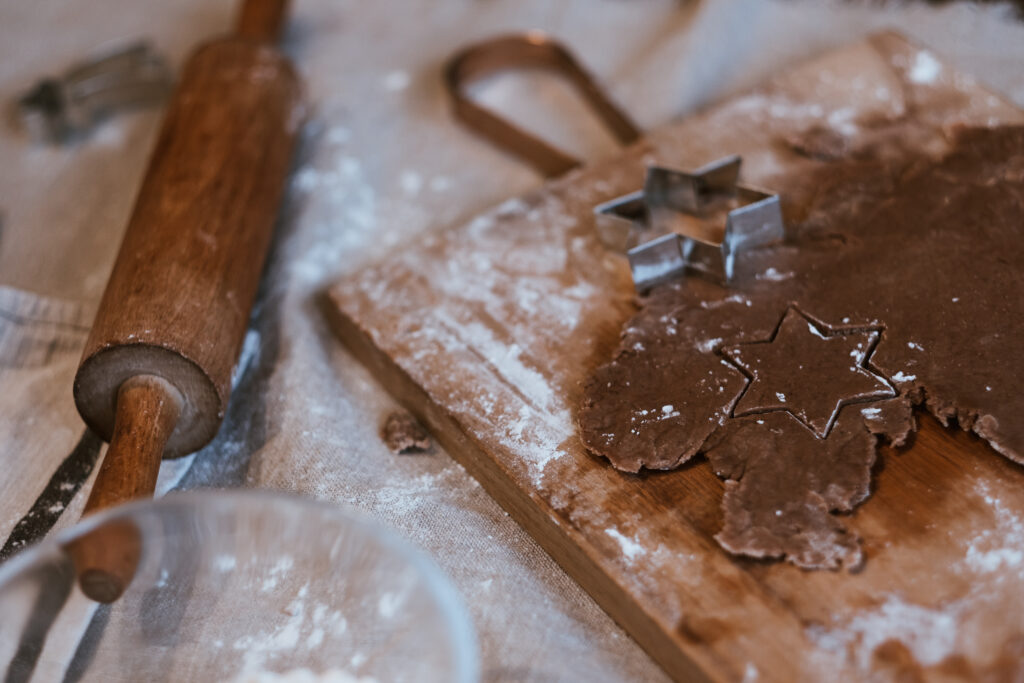The Perfect Gravy Consistency For Biscuit Casserole
How to Achieve the Perfect Gravy Consistency
For Biscuit Casserole
To Achieve the Perfect Gravy Consistency for Biscuit Casserole:
- Start with a flavorful base: use hen or beef stock, or even water if needed.
- Whisk in flour or cornstarch steadily: add a small amount at a time, whisking continually, until the gravy reaches your required consistency.
- Bring to a simmer: warmth the gravy over medium warmth, stirring occasionally, until it thickens and coats the back of a spoon.
- Season to taste: add salt, pepper, or different seasonings to enhance the flavour.
- Adjust consistency if wanted: if the gravy is simply too thick, add more liquid; if it’s too thin, add extra flour or cornstarch.
Tips:
- Use a fats separator to remove extra grease from the pan before making the gravy.
- Strain the gravy via a fine-mesh sieve to take away any lumps.
- Make a double batch of gravy and freeze the leftovers for later use.
Ideal Texture
Creamy, not lumpy
– Creamy, not lumpy
– Smooth and velvety

– No lumps or graininess
– Pours easily over biscuits
– Coats biscuits evenly
– Not too thick or too thin
– Just the right consistency to enrich the biscuits
Smooth, not watery
The perfect texture for gravy is clean and not watery.
To achieve this, it could be very important use the proper ratio of flour to liquid.
For a thicker gravy, use more flour.
For a thinner gravy, use extra liquid.
It can be essential to cook dinner the gravy over low heat and stir continuously.
This will help to stop the gravy from turning into lumpy.
Once the gravy has thickened to the desired consistency, take away it from the heat and let it cool barely earlier than serving.
Thick sufficient to coat biscuits
The ideal gravy texture for biscuit casserole is thick sufficient to coat the biscuits and maintain its form when spooned over them. It should be easy and creamy, with no lumps or graininess. The gravy should be thick enough to remain in place on the biscuits, but not so thick that it’s tough to eat.

To obtain the proper gravy consistency, you will need to use the proper amount of flour. If you utilize an excessive amount of flour, the gravy might be too thick and pasty. If you utilize too little flour, the gravy will be too skinny and runny. The key’s to find the proper balance of flour and liquid.
Once you could have the correct amount of flour, you have to cook the gravy till it reaches the specified consistency. This will take a few minutes of stirring over low heat. As the gravy cooks, it’s going to thicken and turn out to be creamier. Once it has reached the specified consistency, take away it from the heat and serve immediately.
Here are some tips for making the proper gravy consistency for biscuit casserole:
- Use the appropriate amount of flour. The basic rule of thumb is 1 tablespoon of flour per cup of liquid.
- Cook the gravy till it reaches the desired consistency. This will take a few minutes of stirring over low heat.
- Don’t overcook the gravy. Overcooked gravy might be thick and pasty.
- If the gravy is too thick, add slightly more liquid. If the gravy is simply too thin, add somewhat extra flour.
With slightly practice, you possibly can learn to make the right gravy consistency for biscuit casserole. So next time you make this classic dish, remember to give the gravy some further attention. It will make all the distinction within the style and presentation of your casserole.
How to Adjust Thickness
Add more broth or milk to thin
The perfect gravy consistency for biscuit casserole is one that’s thick and creamy, but not too thick that it’s difficult to pour or unfold. If your gravy is merely too skinny, you can add extra flour or cornstarch to thicken it. If your gravy is merely too thick, you probably can add extra broth or milk to thin it.
To thicken gravy, you may make a slurry by mixing equal elements flour or cornstarch with cold water. Add the slurry to the gravy whereas stirring continuously, and prepare dinner till the gravy has thickened to your desired consistency. You can also add immediate mashed potatoes to thicken gravy.
To skinny gravy, simply add extra broth or milk till it reaches the specified consistency. You also can add a bit of water, however this will not thicken the gravy as much as broth or milk.
Simmer longer to thicken
How to Adjust Thickness
1. Simmer longer:
- Continue simmering the gravy over low warmth, stirring often, until it has thickened to the specified consistency.
- Cornstarch slurry:
- Mix equal elements cornstarch and cold water to type a clean paste.
- Gradually whisk the slurry into the simmering gravy and biscuit casserole until thickened.
- Flour roux:
- Create a roux by stirring equal elements flour and butter in a small saucepan over medium heat.
- Cook till the roux is golden brown, then gradually whisk it into the simmering gravy.
- Arrowroot powder:
- Dissolve arrowroot powder in a small quantity of cold water.
- Whisk the dissolved arrowroot into the simmering gravy.
- Bring the gravy to a boil, then reduce warmth and simmer until the surplus liquid has evaporated.
- Stir in shredded cheese, such as cheddar or Parmesan, to thicken the gravy.
- Use equal components flour and milk. This will present you with a medium-thick gravy.
- Cook the gravy over medium warmth. This will assist forestall it from burning.
- Stir the gravy continuously. This will assist forestall it from clumping.
- Season the gravy to taste. Add salt, pepper, and some other spices you want.
2. Add a thickening agent:
3. Reduce the quantity of liquid:
4. Add shredded cheese:
Add cornstarch slurry for further thickness
Whisk some cornstarch slurry into the gravy to achieve an extra-thick consistency.
Cornstarch slurry is a straightforward mixture of equal components cornstarch and chilly water that is used to thicken sauces, gravies, and other liquids.
To make a cornstarch slurry, whisk collectively equal elements cornstarch and chilly water in a small bowl till the combination is smooth and free of lumps.
Once the cornstarch slurry is made, whisk it into the new gravy and bring to a simmer.
The gravy will thicken as it simmers, so make positive to stir it continuously to prevent scorching.
Once the gravy has reached the specified thickness, take away it from the heat and serve.
Tips for Preventing Lumps
Whisk gravy constantly whereas adding flour or cornstarch
Whisk gravy continually while including flour or cornstarch to forestall lumps from forming.
Use chilly liquid when including to scorching roux
When including cold liquid to a sizzling roux, do it progressively, whisking continuously. This helps forestall lumps from forming.
Strain gravy if necessary
Strain the gravy if essential to attain the proper consistency for biscuit casserole.
Culinary Secret
Use reserved biscuit drippings for additional flavor
Biscuit drippings can add a lot of taste to gravy. The subsequent time you make a biscuit casserole, do not throw away the drippings. Instead, reserve them and add them to the gravy. You’ll be stunned at how much taste they add.
To make gravy with biscuit drippings, merely whisk together some flour and milk in a saucepan. Then, add the biscuit drippings and cook dinner over medium heat, stirring constantly. Once the gravy has thickened, take away it from the heat and season to style.
Here are some suggestions for making the perfect gravy with biscuit drippings:
Once you have made the gravy, pour it over the biscuit casserole and enjoy. The gravy will add lots of taste and richness to the casserole.